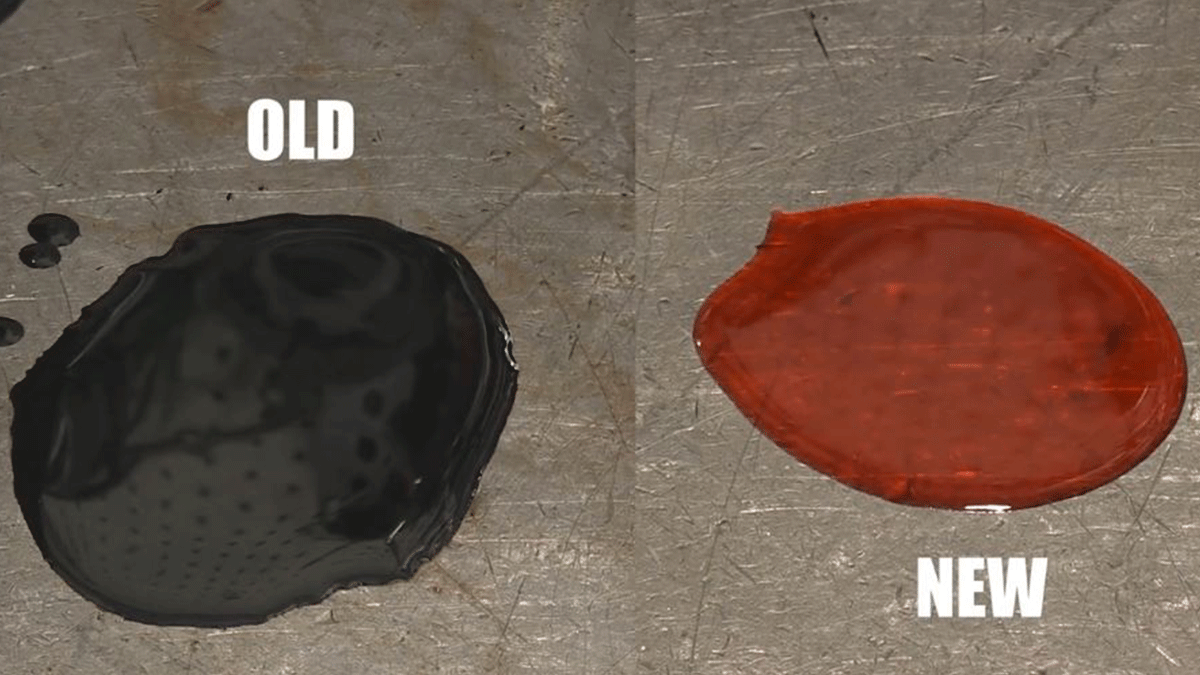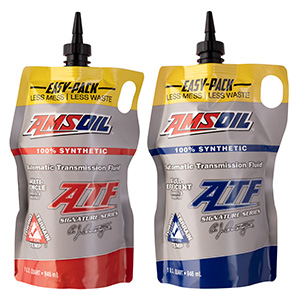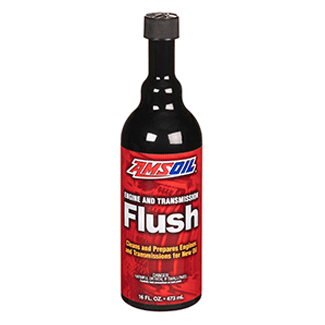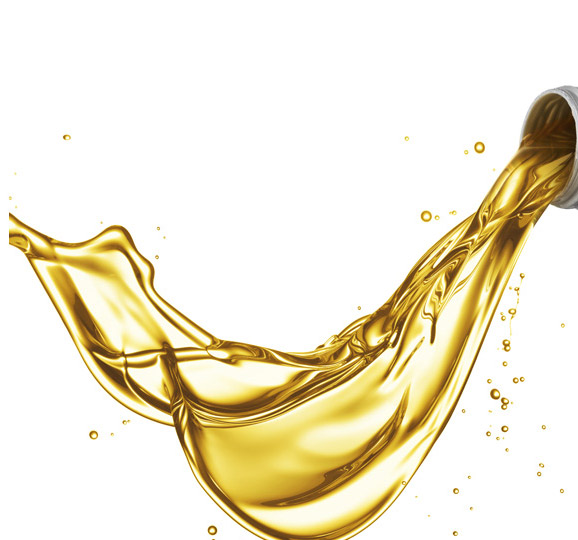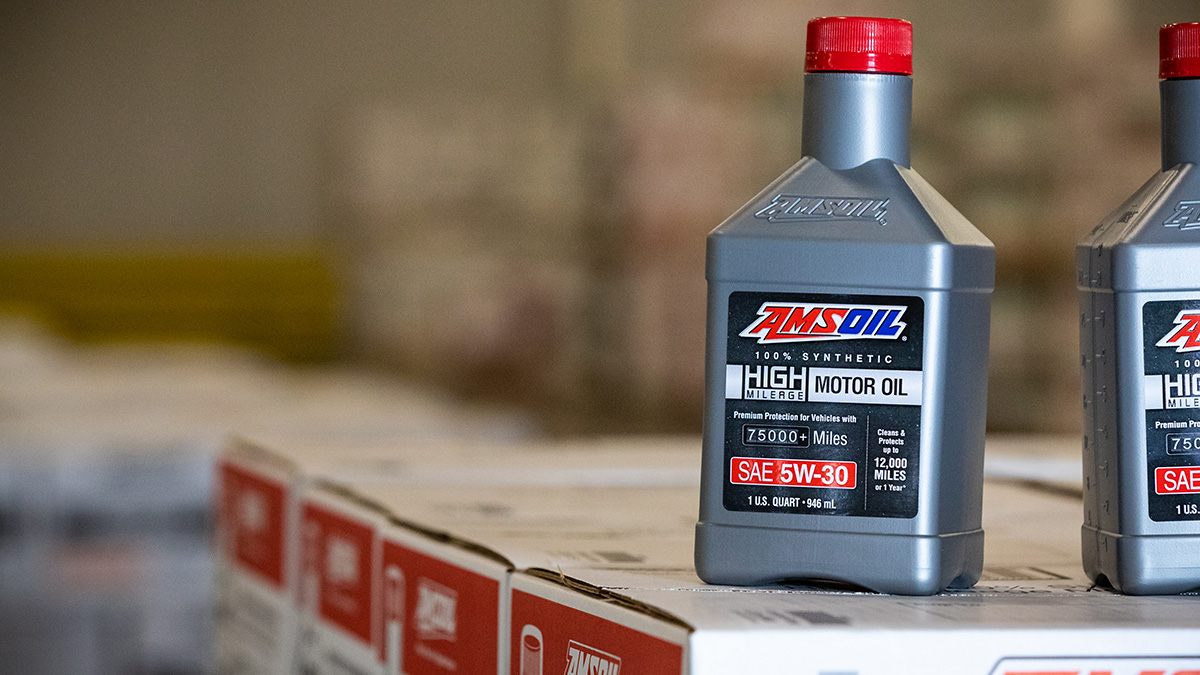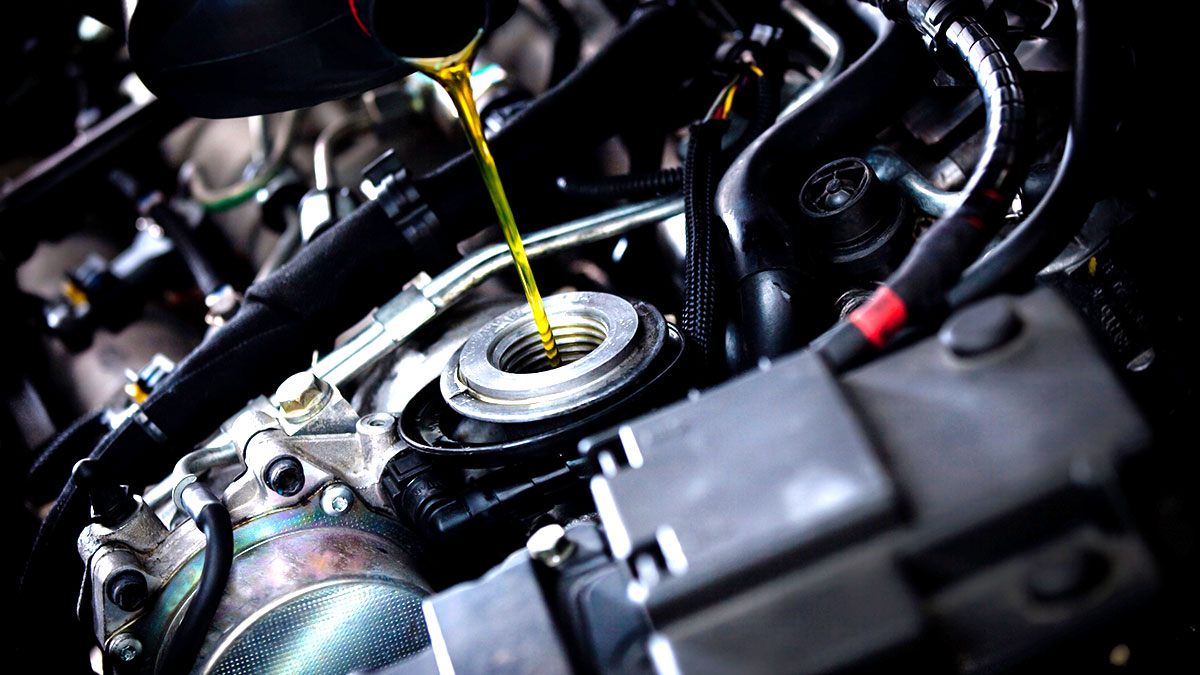It depends on what you want to accomplish. But, first of all, check your owner’s manual to see if your vehicle manufacturer recommends one instead of the other. If you want to ensure removal of nearly all the old transmission fluid, get a transmission flush.
Here’s what we’ll cover:
What is a Transmission Flush?
The benefits of a flush are self-evident: all the old, dirty fluid is replaced with fresh, high-quality fluid. And, as you can see in the image, new transmission fluid is preferable to old fluid.
As a result, your transmission should run cooler and receive maximum protection against wear to clutches, gears and bearings.
It should also shift consistently and crisply since the new fluid will provide the correct frictional properties (old fluid loses its frictional properties over time). In fact, a transmission that shifts hard, hesitates or jerks is sometimes due to worn fluid.

Not only that, but performing a flush helps clean the transmission.
Sludge and other contaminants can accumulate in the fluid due to extreme heat breaking down the fluid. These contaminants circulate throughout the transmission before lodging in the filter.
Before the filter can safely capture the contaminants, however, they can lodge in the narrow fluid passages inside the valve body, leading to poor shift quality.

Performing a flush also allows you to use a flush additive to help clean the transmission and more effectively remove accumulated sludge and other contaminants.
Downsides of a Transmission Flush
For one, it’s more expensive. And some people warn against performing a flush on a transmission using old, dirty fluid.
The flushing procedure may cause some fluid to move in the opposite direction of normal flow due to eddy currents, which may increase the risk of dislodging debris and causing it to settle somewhere it shouldn’t.
What is a Transmission Flushing Machine?
A typical flushing machine uses hoses that connect into the transmission cooling lines. It drains the old fluid and holds it inside the machine while replenishing the transmission with new fluid.
Unlike a simple pan-drop, a flushing machine removes just about all the old fluid, including the fluid inside the torque converter.
Transmission Flush Cost
Since the procedure uses new fluid to perform the flush, it requires additional fluid beyond the transmission’s final capacity. Plus, additional fluid is needed to fill the flush machine reservoir and lines. Some fluid is also used to prime the pump. Those extra quarts are where most of the cost lies.
Your final transmission flush cost will depend on a few factors:
- The transmission’s total-fill capacity
- Where you have the service performed
- The cost of the transmission fluid
Say you own a small car that takes about eight quarts of transmission fluid and you have the service done at the dealership using the original equipment manufacturer (OEM) fluid that costs about $20 per quart. They also replace the transmission filter and pan gasket.
In this case, a transmission flush will probably cost about $250, depending on where you live.
But, say you roll in a RAM* 2500 that takes more than 15 quarts of transmission fluid. Your cost to flush the transmission can quickly surpass $400.
However, independent mechanics usually charge less than dealerships, throwing another wrinkle into the math.
Your transmission flush cost can range anywhere from $150-$400, depending on vehicle size and whether you visit an independent mechanic or the dealership.
Plus, every so often you see mechanics offering a transmission flush for around $100 to get you in the door, so keep your eyes open for deals. Be warned that these deals always include a limit on number of quarts of fluid used, so don’t expect to get the tranny on your RAM 2500 flushed for that price.
Bear in mind that many repair shops and quick lubes are particular about the fluids they use in their flushing machine, so it may be difficult to find one that accepts customer-supplied fluids. To avoid cross contamination, flushing machines need to be cleaned between products.

Transmission Fluid Change Cost
So, how much is a transmission fluid change?
Again, it depends on the transmission’s capacity, where the service is performed, filter & gasket cost, and fluid cost. Since a pan-drop requires less fluid than a transmission flush, it will cost less.
Here, I’ll go to the well of personal experience. I dropped the pan on my old Geo Prizm,* drained about three quarts of fluid and replaced it with AMSOIL Signature Series Synthetic Automatic Transmission Fluid, replaced the filter (the gasket was still good) for a cost of about $60.
I could have paid less had I used AMSOIL OE Synthetic Automatic Transmission Fluid, which is geared toward passenger cars and trucks, but a Geo Prizm deserves an overengineered fluid designed for towing and hauling, in my opinion.
Now let’s use my in-laws’ heavy-duty diesel pickup they use to pull a camper around the country.
A pan-drop requires seven quarts of fluid and a larger, more expensive, filter. They’re not avid DIYers like me, so tack on another $100 or so to pay the mechanic, meaning their transmission fluid change cost is going to run about $275.
Again, your transmission fluid change cost will vary depending on vehicle size, who performs the service and filter & gasket cost.
If you do it yourself on a small vehicle, it’ll cost $50-$75. Pay a dealership to change fluid on your heavy-duty truck, and plan on paying $200-$300, especially if you use the OEM fluid.
Pan-Drop Transmission Fluid Change
If you have reservations about a flush, go with a pan-drop instead.
While it reduces the risk associated with flushing old, dirty fluid through the transmission, a pan-drop also has downsides.
- Removes only about a third of the fluid, which reduces the performance of the new fluid. The rule of thumb is 3 pan-drops are needed to remove most of the old fluid, which can be time-consuming.
- Can be a mess, in addition to time-consuming.
- Can be a pain on some vehicles.
I can tell you from experience that a pan-drop can be a bigger job than you think.
You may have to remove plastic splash guards or metal skid plates to access the transmission pan.
In case you haven’t been under your vehicle in a while, plan on encountering rusted, stuck bolts if you drive in wet, snowy conditions.
Don’t be surprised if you crack a splash guard in one or two places as you try to remove/reinstall it.
